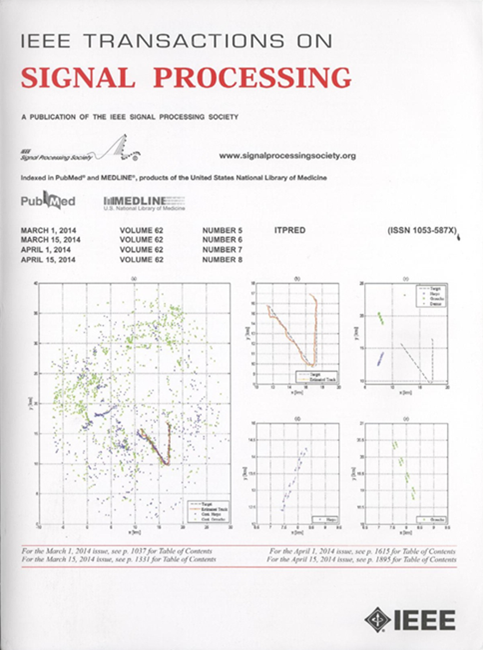Wideband Beamforming With RIS: A Unified Framework via Space-Frequency Transformation
IF 4.6
2区 工程技术
Q1 ENGINEERING, ELECTRICAL & ELECTRONIC
引用次数: 0
Abstract
The spectrum shift from sub-6G bands to high-frequency bands has posed an ever-increasing demand on the paradigm shift from narrowband beamforming to wideband beamforming. Despite recent research efforts, the problem of wideband beamforming design is particularly challenging in reconfigurable intelligent surface (RIS)-assisted systems, due to that the RIS is not capable of performing frequency-dependent phase shift, therefore inducing high signal processing complexity. In this paper, we propose a simple-yet-efficient wideband beamforming design for RIS-assisted systems, in which a transmitter sends wideband signals to a desired target with the aid of the RIS. In the proposed design, we exploit space-frequency Fourier transformation and stationary phase method to derive an approximate closed-form solution of RIS phase shifts, which significantly reduces the signal processing complexity compared to existing approaches. The obtained solution is then used to generate a large and flat beampattern over the desired frequency band. Through numerical results, we validate the effectiveness of our proposed beamforming design and demonstrate how it can improve system performance in terms of communication rate and sensing resolution. Beyond generating the flat beampattern, we highlight that our proposed design is capable of mimicking any desired beampattern by matching the RIS phase shift with the amplitude modulation function, thus providing valuable insights into the design of novel wideband beamforming for RIS-assisted systems.基于RIS的宽带波束形成:基于空频变换的统一框架
随着sub-6G频段向高频频段的频谱转移,对窄带波束形成向宽带波束形成的范式转移提出了越来越高的要求。尽管最近的研究努力,宽带波束形成设计问题在可重构智能表面(RIS)辅助系统中尤其具有挑战性,因为RIS不能执行频率相关的相移,因此导致高信号处理复杂性。在本文中,我们提出了一种简单而高效的RIS辅助系统的宽带波束形成设计,其中发射机借助RIS将宽带信号发送到期望的目标。在提出的设计中,我们利用空间频率傅里叶变换和固定相位方法推导出RIS相移的近似封闭形式解,与现有方法相比,该方法显着降低了信号处理的复杂性。然后使用得到的解在所需频带上产生大而平坦的波束图。通过数值结果,我们验证了我们提出的波束形成设计的有效性,并演示了它如何在通信速率和传感分辨率方面提高系统性能。除了生成平坦波束图,我们强调,我们提出的设计能够通过匹配RIS相移与调幅函数来模拟任何所需的波束图,从而为RIS辅助系统的新型宽带波束形成设计提供有价值的见解。
本文章由计算机程序翻译,如有差异,请以英文原文为准。
求助全文
约1分钟内获得全文
求助全文
来源期刊

IEEE Transactions on Signal Processing
工程技术-工程:电子与电气
CiteScore
11.20
自引率
9.30%
发文量
310
审稿时长
3.0 months
期刊介绍:
The IEEE Transactions on Signal Processing covers novel theory, algorithms, performance analyses and applications of techniques for the processing, understanding, learning, retrieval, mining, and extraction of information from signals. The term “signal” includes, among others, audio, video, speech, image, communication, geophysical, sonar, radar, medical and musical signals. Examples of topics of interest include, but are not limited to, information processing and the theory and application of filtering, coding, transmitting, estimating, detecting, analyzing, recognizing, synthesizing, recording, and reproducing signals.
 求助内容:
求助内容: 应助结果提醒方式:
应助结果提醒方式:


